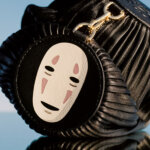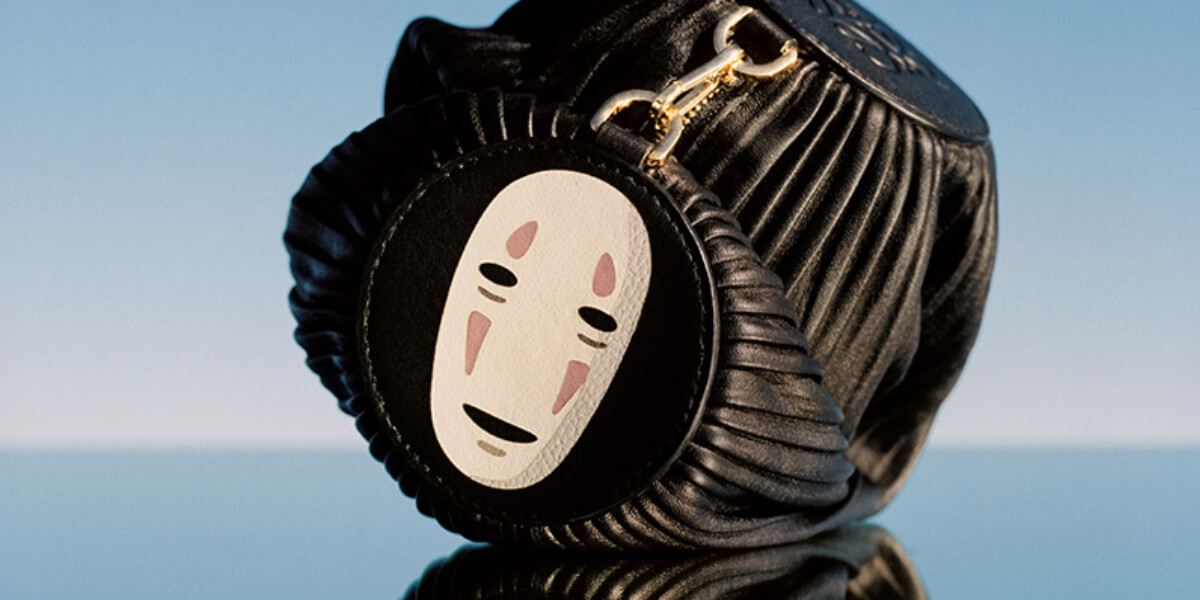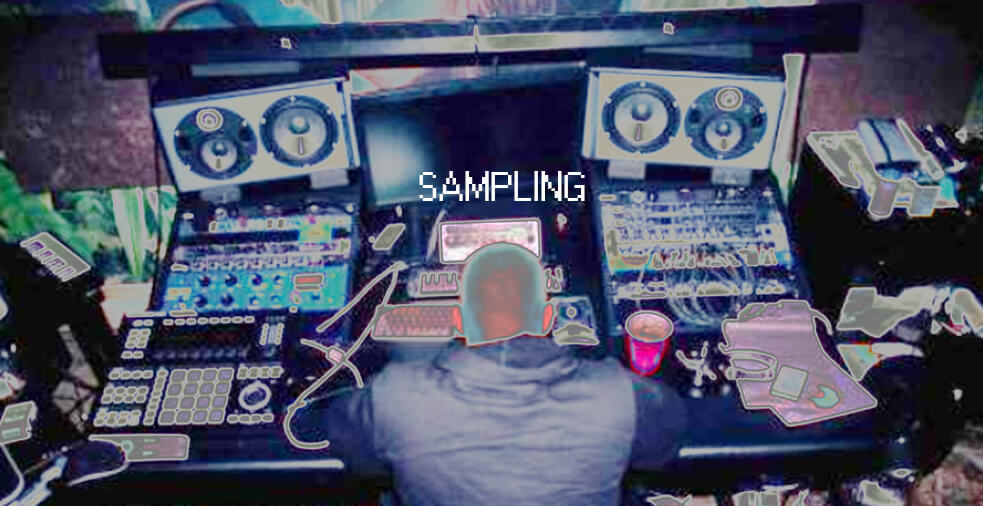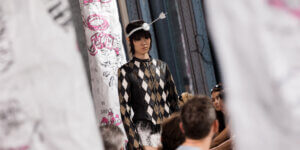We have all heard of ‘quiet luxury’ and ‘stealth wealth’. We have heard about the act of being wealthy without having to show it. And we have heard about certain privileged people (read: super-rich people) adopting a subtle dress code that exudes luxury without the obvious markers of excessive logos, big name brands and the trendy shapes and styles that „everyone else is wearing”.
So we know that it’s one thing above all else: boring. Of course, it all comes down to personal taste and preferences, and fortunately we have already left the flex culture behind us. But what Stealth Wealth most of the time (!) lacks is some form of fun and, dare we say, spice that makes the look interesting. I mean, how many “The Row” looks can we take?
Instead, let’s talk about the anime luxury complex, or what made the love story between anime and high fashion possible. With its striking visuals, fantastic storytelling and unique aesthetic, anime has become a source of inspiration for designers around the world. From high fashion to streetwear, anime-inspired designs are popping up everywhere, bringing virality and fantasy to the design world. But first, let us examine the evidence: The past 12 months have brought us Loewe x Studio Ghibli – twice.
In January 2022, Loewe launched another collaboration with Studio Ghibli, this time with accessories and apparel inspired by Spirited Away, as a follow-up to last year’s My Neighbour Totoro collection. As expected given the success of the Totoro collection, the Spirited Away line quickly sold out and appeared on resale websites at exorbitant prices. But it wasn’t just the clothes and bags that were selling on sites like Grailed; even special Spirited Away Loewe shopping bags appeared on eBay for hundreds of dollars. Spirited Away is perhaps an anomaly in the anime genre – the film won the Academy Award for Best Animated Feature in 2003, giving it a mainstream, global relevance rarely seen in other anime. But it is just the tip of the iceberg of the immense anime fandom, which is gaining increasing recognition in the West, thanks in no small part to the introduction of anime series on streaming platforms and the overall greater availability of anime and manga titles in English.
We also got Jimmy Choo x Sailor Moon, as well as Montblanc x Naturo and (although not luxury but still expensive) Astroboy x MSCHF. The list goes on. For example Loewe’s partnership with Studio Ghibli is by no means unique in the luxury fashion sector: other lux labels such as Gucci, Moschino and Louis Vuitton have also recognised the strong cultural appeal of anime and manga collaborations in recent years. According to shopping app LYST, following the announcement of the second Loewe x Ghibli collection, searches for Loewe increased by 23 percent in 24 hours, while the use of terms such as “anime” and “manga” increased by 60 percent year-on-year.
But why is high-end fashion suddenly obsessed with anime? By tapping into fandoms and harnessing the influence of anime and manga, luxury brands are reaching out to new audiences. And they are positioning themselves alongside globalised cultural sources. In fact, the anime market is expected to grow to $50 billion by 2029.
Meaning en detail: While no longer a cult or niche fandom, anime and manga properties continue to add an unexpected twist to traditional luxury products, demonstrating these brands’ interest in engaging with an evolving pop culture landscape. The inclusion of a beloved Ghibli character like Totoro can help these brands transform a simple bag into a modern collectible. There’s a growing fan base that’s ready to snap up not just a co-branded sweatshirt, but even a paper shopping bag emblazoned with their favourite character.
Anime and manga have long been associated with subcultures, and their popularity has had a significant impact on mainstream culture. By collaborating with anime studios, luxury brands are tapping into this influence, creating collections that appeal to a wider audience and creatively differentiating themselves from the ‘mainstream’. Another factor is the popularity of cosplay – with self-expression and gender fluidity on the rise, cosplay is an important driver in the world of non-binary identities. Cartoon characters have become an important part of our cultural lexicon, often used to convey complex ideas and emotions in a playful and accessible way. In a world where images are constantly shared and re-shared online, designers are looking for ways to create designs that are instantly recognisable and shareable. Take MSCHF’s infamous viral red boot, for example – cartoonification allows designers to create designs that are highly visual and have a strong impact on social media platforms.
So what could be next? Perhaps anime collaborations will soon extend to fine jewellery, hospitality and fragrances?




























